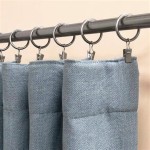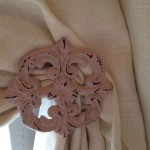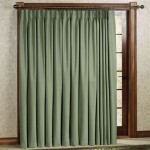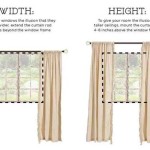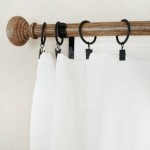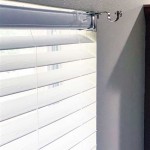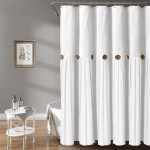What Is A Shower Curtain Liner?
A shower curtain liner is an essential component of most shower and bathtub setups. It serves a critical purpose in protecting the main shower curtain and preventing water damage to the bathroom floor. While the main shower curtain often provides the aesthetic element of the bathroom, the liner focuses on functionality and durability.
The primary function of a shower curtain liner is to act as a barrier against water. Without a liner, water would seep through the decorative shower curtain, potentially leading to mold and mildew growth. The liner is designed to be waterproof or water-resistant, ensuring that water stays within the confines of the shower or bathtub. This simple function prevents water from splashing onto the bathroom floor, which can create slipping hazards and damage flooring materials over time.
Shower curtain liners come in a variety of materials, each with its own advantages and disadvantages. The choice of material often depends on factors like budget, durability requirements, environmental concerns, and personal preferences. Understanding the different types of materials can help in selecting the most suitable liner for a particular bathroom situation.
Installation of a shower curtain liner is generally straightforward. Most liners are equipped with grommets along the top edge, which allow them to be hung using shower curtain rings or hooks. These rings or hooks attach to the shower curtain rod, holding the liner in place. Proper installation is crucial to ensure that the liner effectively contains water and prevents leaks.
Key Point 1: Purposes and Functionality
The shower curtain liner serves several critical purposes within a bathroom. Its most important function is preventing water from escaping the shower or bathtub enclosure. This seemingly simple task has significant implications for the overall health and maintenance of the bathroom environment.
Without a shower curtain liner, water would saturate the decorative shower curtain. This could lead to several problems. First, the shower curtain material itself might be damaged by constant exposure to water. Fabrics can fade, become stained, or even disintegrate over time. Second, a wet shower curtain provides an ideal breeding ground for mold and mildew. These microorganisms thrive in damp, dark environments and can cause unpleasant odors and health problems.
Furthermore, water that escapes from the shower area can damage the bathroom floor and walls. Over time, this can lead to structural issues, such as rotting wood or peeling paint. The presence of moisture also encourages the growth of mold and mildew in hidden areas, which can be difficult to detect and even more challenging to eradicate.
The shower curtain liner, therefore, acts as a protective shield, preventing these potential problems. Its waterproof or water-resistant properties ensure that water remains contained within the shower or tub. This reduces the risk of mold and mildew growth, protects the shower curtain from damage, and prevents water damage to the bathroom's structure.
Beyond water containment, shower curtain liners can also contribute to privacy and insulation. While the decorative shower curtain primarily addresses privacy concerns, the liner offers an additional layer of concealment. In colder climates, the liner can also provide a small degree of insulation, helping to keep the shower area warmer.
Finally, the shower curtain liner simplifies cleaning and maintenance. Because it bears the brunt of water exposure, the liner is designed to be easily cleaned. Regular cleaning can prevent the build-up of soap scum, mildew, and other residues, ensuring that the liner remains hygienic and functional.
Key Point 2: Material Types and Considerations
Shower curtain liners are available in a variety of materials, each with its own distinct characteristics. The choice of material can affect the liner's durability, water resistance, environmental impact, and overall cost. Common materials include PVC (polyvinyl chloride), PEVA (polyethylene vinyl acetate), EVA (ethylene vinyl acetate), fabric (typically polyester), and sometimes, specialty materials like hemp.
PVC liners are among the most widely used and often the most affordable. They are highly waterproof and durable, making them effective at preventing water leaks. However, PVC is a plastic that contains chlorine, and its manufacturing and disposal can have negative environmental impacts. Additionally, some PVC liners may release volatile organic compounds (VOCs), which can contribute to indoor air pollution.
PEVA and EVA liners are considered more environmentally friendly alternatives to PVC. They are chlorine-free and generally release fewer VOCs. PEVA and EVA liners offer good water resistance and are available in a range of thicknesses and designs. While they may not be as durable as PVC liners, they represent a more sustainable option for consumers concerned about environmental impact.
Fabric shower curtain liners, typically made of polyester, provide a different set of advantages. These liners are often machine washable, making them easy to clean and maintain. They can also be treated with a water-repellent coating to enhance their water resistance. Fabric liners tend to be more aesthetically pleasing than plastic liners, and they can add a touch of elegance to the bathroom.
Hemp shower curtain liners offer a natural and sustainable option. Hemp is a fast-growing plant that requires minimal pesticides and fertilizers, making it an environmentally friendly choice. Hemp liners are naturally resistant to mold and mildew, and they offer good water resistance. However, they may be more expensive than other types of liners.
When selecting a shower curtain liner material, it is important to consider factors such as durability, water resistance, ease of cleaning, environmental impact, and cost. For those seeking a budget-friendly option, PVC liners may be suitable. However, consumers concerned about environmental issues may prefer PEVA, EVA, fabric, or hemp liners.
Key Point 3: Installation, Maintenance, and Replacement
Proper installation and regular maintenance are essential for maximizing the lifespan and effectiveness of a shower curtain liner. Incorrect installation can lead to water leaks, while neglecting maintenance can result in the build-up of soap scum, mildew, and other residues.
The installation process typically involves hanging the liner from a shower curtain rod using shower curtain rings or hooks. Most liners have grommets along the top edge, which provide reinforced attachment points for the rings or hooks. It is important to ensure that the rings or hooks are securely attached to both the liner and the shower curtain rod to prevent the liner from falling down.
When hanging the liner, it is crucial to ensure that it drapes properly and covers the entire shower or bathtub opening. The liner should extend slightly beyond the edges of the tub or shower to prevent water from splashing onto the floor. If the liner is too long, it can be hemmed or trimmed to the appropriate length. However, care should be taken not to cut the liner too short, as this can compromise its ability to contain water.
Regular cleaning is essential for maintaining the hygiene and functionality of the shower curtain liner. Over time, soap scum, mildew, and other residues can accumulate on the liner, creating an unsightly and unsanitary environment. Cleaning methods vary depending on the type of material. Plastic liners can typically be cleaned with a damp cloth or sponge and a mild detergent. Fabric liners can often be machine washed according to the manufacturer's instructions.
To prevent mildew growth, it is important to allow the shower curtain liner to dry completely after each use. This can be achieved by spreading the liner out to allow air to circulate freely. Leaving the bathroom door or window open can also help to promote ventilation and prevent moisture build-up.
Even with proper care and maintenance, shower curtain liners will eventually need to be replaced. The lifespan of a liner depends on several factors, including the type of material, the frequency of use, and the level of maintenance. Signs that a liner needs to be replaced include excessive staining, tearing, or mildew growth that cannot be removed. Replacing the liner regularly ensures that it continues to effectively prevent water leaks and maintain a hygienic shower environment.
Choosing the right liner and properly maintaining it are key to keeping the bathroom clean, dry, and free from mold and mildew. Selecting the correct material based on personal needs and environmental consciousness ensures satisfaction with the product and contributes to a healthier living space.
How Often To Wash Your Shower Curtain And Liner
Fabric Shower Curtain Liner 70 X 72 The
Clear Midweight Shower Curtain Liner 72
Juliette Lablanc Peva 72 In X Clear Shower Curtain Liner Yml008351
Host Home Heavy Duty Shower Curtain Liner 2 Pack Waterproof 72 X Clear 8 Gauge Peva Soap Scum Resistant Rust Proof Metal
Shower Curtain Vs Liner What Is The Difference
Downluxe Waterproof Fabric Washable Shower Curtain Liner White 72 L X 36 W
Zip Off Shower Curtain Liner
Dainty Home Peva 72 In W X 70 L White Shower Curtain Bathroom Waterproof Liner 3gslwh The
Custom Bedding Fashion Window Treatments
See Also

